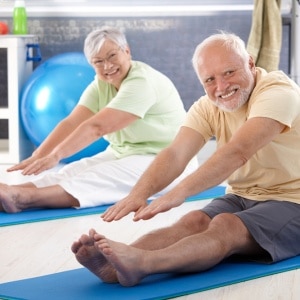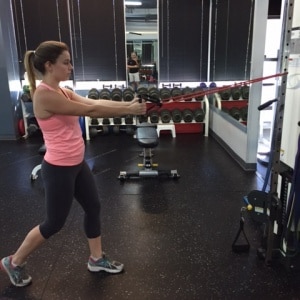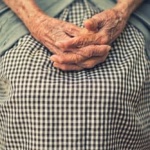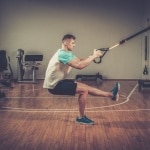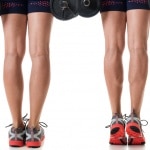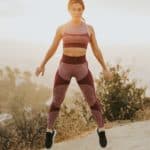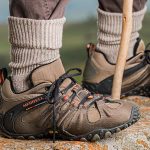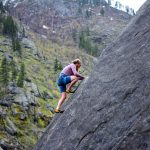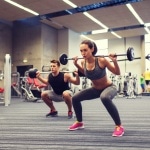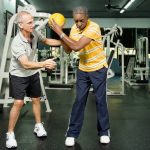November 2016
Ankle Your Way to Greater Mobility…and Wellness
As we age, many systems begin to falter or fail. It is nothing earth-shattering to hear that your heart muscle weakens, especially if diseased; your spinal disks compress; your skin sags; your eyes and ears don’t work as well as when you were younger. And you don’t move as well, either.
The age-associated loss of power and speed in your gait can be related to a variety of systems that begin to fail as we get older. Our bones may have less cartilage on their ends where they meet other bones – this is called osteoarthritis. Our muscles get weaker, especially the Type 2 fibers, the ones associated with speed and power movement. Our tendons and ligaments get tighter making youthful ranges of motion at our joints a little more challenging.
And our nervous system just does not work like it used to. Thus, nerves don’t fire in the coordinated way of our youth, they don’t fire as potently, and they may actually have atrophied to the point of no longer creating the muscle contractions we need.
It is this loss of neuromuscular integration that may be at the heart of some of that age-related reduction in gait mechanics that we shall be discussing forthwith (a great old English phrase I’ve never before used.)
In addition to another post on this topic (11/4/16), two articles have crossed my desk related to these concerns. First is the Harvard Health Letter (October 2016) titled, “Good old-fashioned mobility insurance: Protecting your feet and ankles“.
This simple-to-read review of what you need to be aware of and how to manage and prevent issues with your wheels will address issues beyond those of neuromuscular function While I intend to go deeper into that discussion, let it be said that the emphasis on the ankles nowadays is notable: for years it’s been about the knees and low back. Now researchers are ever more aware that it – elder-gait – may stem from our foundations – the feet and ankles.
Then an article from ACSM’s Exercise and Sport Science Reviews (October 2016) analyzed current thinking and data on why it is that gait slows as we age. It notes that studies of ankle strengthening are less that encouraging as a means by which to re-invigorate natural gait speed. Natural age-related sarcopenia (natural loss of muscle mass) can be partially reversed with muscle training but even that does not reverse shorter and slower striding.
Studies of flexibility training are even less fruitful even though we know that we lose range of motion in our ankles and hips. Said losses impair one’s ability to stretch it out, stride long.
Interestingly, as any healthy older adult can attest, they can push off faster and harder if demanded, or if consciously motivated. However, after a few good strides it is not uncommon for them to revert to the mean – the slower gait.
After reviewing the usual suspects, they authors suggest that maybe the reduction in propulsion is a neural control issue.
What they propose is the dynamic balance, as it diminishes, is better compensated for by taking shorter strides. As they write, “there may be a tradeoff between propulsive power genera
tion and walking balance control.”
All this goes to suggest that there are potentially three angles to approach this matter: increase strength of the calf muscles, increase range of motion of the hips, and improve dynamic, not just static, balance.
 Of course, they suggest a need for more studies. But as a personal fitness professional, these three approaches are my standard program for older adults, especially those with lower extremity problems. It is not to increase their stride length or stride rate. It is to enable and empower them to be able to move faster should they need.
Of course, they suggest a need for more studies. But as a personal fitness professional, these three approaches are my standard program for older adults, especially those with lower extremity problems. It is not to increase their stride length or stride rate. It is to enable and empower them to be able to move faster should they need.
After all, studies show that frailty can be assessed based on walking speed. The inability to cover 5 meters (about 16 ft) in less than 6 seconds is but one marker of frailty. So building up those lower extremities in neuro as well as muscle will allow one to be more independent as they age, and to enjoy everything that life has to offer.
Longevity Comes in Having Good Taste
Ponce de Leon searched for it on the Western hemisphere and, ever since, Americans, and most other nationalities and cultures have sought it – the Fountain of Youth.
As proponents of fitness can tell you, if they’re honest, exercise will not – by itself – help you live longer, even with its many disease-modifying effects. Otherwise, marathoners would outlive most of us and ultra runners would outlive them.
So, in a comprehensive analysis of what it takes to live a long life, most scientists have fallen back on what has been known since at least Ben Franklin’s time.
That is, regular exercise, good sleep/rest, and a healthy diet.
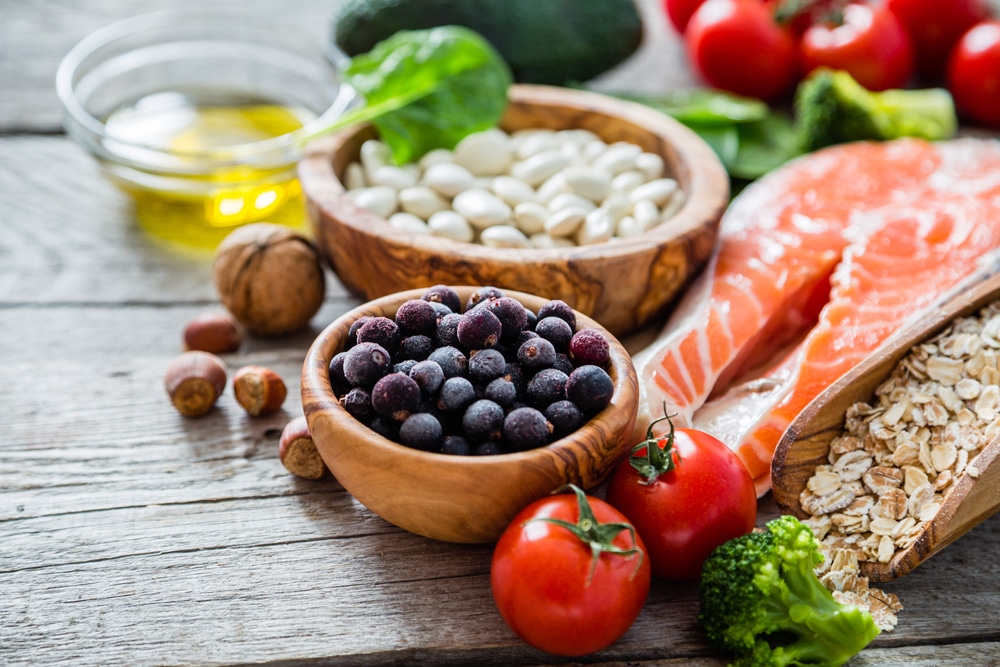
Tufts Health & Nutrition Letter (November 2016) reports on a study in the British Journal of Nutrition of almost 9,000 people over age 65 that suggested what you might expect:
During the 9-year follow up, those who ate more fruits, veggies, and fish were less likely to die.
Those who ate four or more servings of fruit or veggies a week – did you read that right? per week, just 4 or more servings of fruit or veggies – were at 20% lower risk. Even just two servings of fish/wk conferred an 11% lower risk of early death. On the other side of that coin, eating more than one serving of meat/day increased the risk of dying.
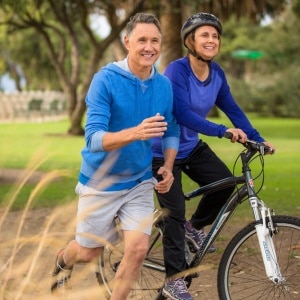 The Mediterranean diet, where fruits, veggies, fish and olive oil runs freely, has been correlated to all sorts of health benefits, from cardiovascular to metabolic to weight management, etc.
The Mediterranean diet, where fruits, veggies, fish and olive oil runs freely, has been correlated to all sorts of health benefits, from cardiovascular to metabolic to weight management, etc.
While the numbers behind the conclusions of this study in BJN are not all that impressive, note that any diet that confers a little more years to your life also confers more life to your years.
And that is what most of us are seeking through all of our other healthy behaviors, right?
Exercise of the Month: Standing Split-stance Row
- Begin by standing in a split stance with your front foot flat on the floor, and your back heel raised. Hold handles of either flexible tubing or those connected to a plate-loaded system, with your palms facing each other.
- Perform the row by pulling your elbows as far back as you can, allowing them to bend in the process, and squeezing your shoulder blades together during and at the end of the movement. Return to beginning position and repeat. Switch feet and perform another set.
- Muscles used: Primarily the mid and lower trapezius, rhomboids, latissimus dorsi, posterior deltoid, biceps group, and brachioradialis. The split stance also causes core hip and torso muscles to be utilized much more than if a bilateral stance were used.
Recipe of the Month
Used with permission of Mayo Foundation for Medical Education and Research (MFMER). All rights reserved. For more information go to http://www.mayoclinic.org/healthy-lifestyle/recipes.
Split Pea Soup
It’s getting cooler outside, eventually. So warm soups warm hearts. Try this simple recipe from the Mayo Clinic.
Ingredients
For Chive Cream….
-
- 3 Tbs coarsely chopped fresh chives, and save the long cuts for garnish
- 3 Tbs fat-free plain yogurt
- 1 Tbs low-fat buttermilk
- 1/4 Tsp sugar
- Pinch of salt
Soup:
- 2 Tbs olive oil
- 1 yellow onion, chopped
- 1 large carrot, peeled and chopped
- 2 cloves garlic, minced
- 1 1/2 cups dried yellow or green split peas, picked over, rinsed and drained
- 3 c water
- 3 c low sodium vegetable stock or broth
- 1/4 Tsp freshly ground black pepper
- 1/2 c chopped lean ham if desired
Directions
Combine chopped chives, yogurt, buttermilk, sugar and salt in small blender or processor. Blend well, cover and refrigerate the chive cream.
In a large pot or saucepan, heat the olive oil at medium heat, add onion and saute till lightly golden (~5-6 mins). Add carrot, saute another 5 minutes till softened. Then add garlic and saute 1 minute. Stir in split peas, water, stock, and the pepper, and bring to a boil. Lower heat to low, partially cover and simmer for about an hour or until peas are tender.
If you like yours chunky, skip this step. Otherwise, to puree, blend soup in batches until smooth and return to saucepan on medium heat and reheat it slowly.
Warm individual bowls, and ladle soup. Drizzle or swirl the chive cream on top and garnish with a sprinkle of chopped ham and some long cuts of chives.
Nutritional Breakdown:
Serving size: 2.5 cups
- Calories: 377
- Total fat: 9 g Monounsaturated fat: 5 g Saturated fat: 1 g Trans fat: trace
- Cholesterol: 8 mg Protein 22 g Sodium: 410 mg
- Total carbohydrate 52 g Total sugars: 11 g Added sugar: 0 g
- Dietary fiber 19 g
Reviews
For those trying to build more muscle mass, resistance training plus calories plus protein are the essential ingredients. A study in Medicine & Science in Sports & Exercise (Sept. 2016) found that consuming a large bolus of protein before bedtime but after an evening strength routine enhances protein synthesis. For many, a workout before bedtime may interfere with sleep. But many others may actually sleep better if they did their exercise and protein supplement right before bedtime.
Kids are getting fattier! A study out of Finland found that 6 – 8 y/o kids don’t need all that much exercise in order to reduce total body fat and to increase cardiorespiratory fitness. Using an Actiheart movement sensor and DEXA scans and a cycle ergometer test to gage levels of sedentary and vigorous activity, body fat, and aerobic fitness, respectively, they found that as little as 10 mins/day of high-intensity activity reduced body fat by about 25-30% compared to sedentary kids. Sports Medicine Oct. 2016


